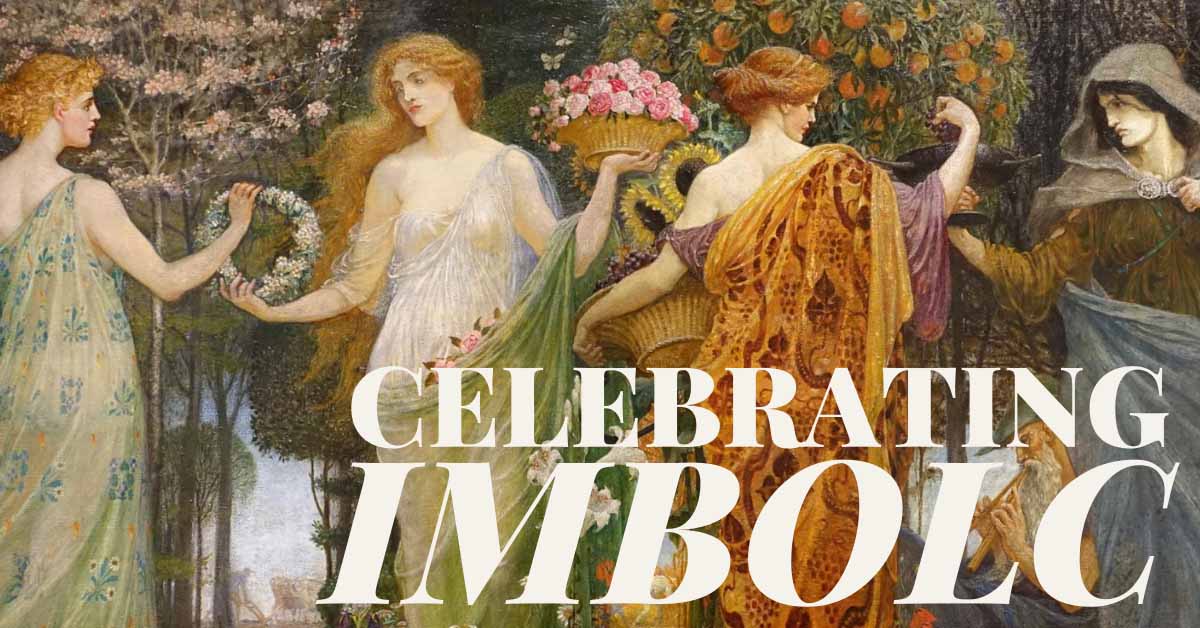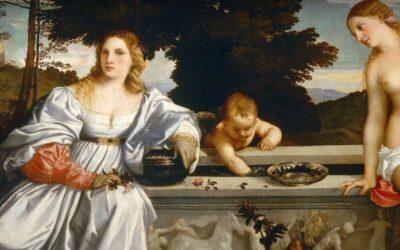Sometime in the night, your hand slipped out from under your worn fur blanket. You can feel the chill long-settled in your fingers and on your face.
You don’t want to get up and face the freezing cottage…but someone has to start the fire. Instead, you sluff off your blanket and wrap on a cloak. It’s also starting to wear, but you’ll have to make do until you can shear the flock for wool in the spring.
Your hands fumble with the kindling. A small flame lights and you tenderly shield it with your hands from the draft, blowing on it gently.
You look around for something to break your fast.
The last fruit preserves were eaten long ago. You had tried to ration them out, but desire trumped reason. There’s only strips of salted jerky remaining.
There might be some nuts left in the forest, if you’re willing to fight off the animals and the freezing air. You look outside at the cold, harsh winter sun. Is it worth it?
In the past, winter carried more than just the threat of discomfort. It was a matter of life or death. Our ancestors spent every year stockpiling resources to ensure their family’s survival.
Our modern luxuries- the centralized heating, an abundant supply of fresh food, and warm coats- would be beyond the wildest imaginations of even the most wealthy in ancient times. As fast as society has evolved, we still have some biological links to the seasonal feelings of our ancestors.
Don’t you also get the winter blues? Feel ennui at waking up to another grey day?
How did our ancestors cope? Celtic mythology offers an answer: Imbolc. An ancient tradition that gives an extra lift post-holiday…and makes way for the celebration of spring.
What is Imbolc?
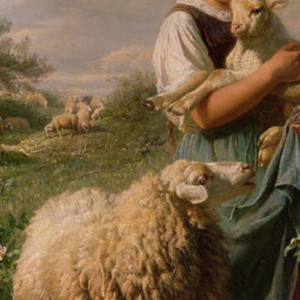 Imbolc—also known as Imbolg, Oimelc, the Feast of St. Brigid, or Candlemas—is a festival that occurs on the first two days of February. Modern pagans of many identities celebrate the sabbat, with most practices finding roots in ancient Celtic religious practices.
Imbolc—also known as Imbolg, Oimelc, the Feast of St. Brigid, or Candlemas—is a festival that occurs on the first two days of February. Modern pagans of many identities celebrate the sabbat, with most practices finding roots in ancient Celtic religious practices.
Imbolc is about focusing on the light at the end of the tunnel.
Winter is almost past. We just need to hang on a little longer. If you pay close attention to the natural world around Imbolc, you will notice some subtle changes pointing you toward spring.
Historically, farmers in Ireland and Scotland harvested the first milk of the year from their sheep in early February. After months of jerky and jam rations, the taste of fresh milk and cheese was worth celebrating—and showed your family was likely to survive the winter.
The first milk represented the coming of nature’s bounty. The ground was beginning to thaw and the weather was temperate enough for grazing.
Although most civilizations and spiritualities have identified the Vernal Equinox (when day and night are the same length) as the official start of spring, in the Ancient Celtic calendar, the first milking marked spring’s arrival.
When Survival Turns Celebration
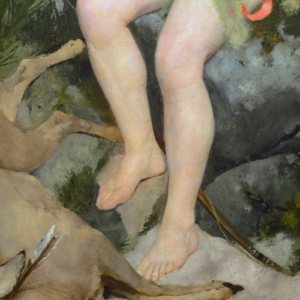 Celebration around the first milking crystallized into the festival of Imbolc.
Celebration around the first milking crystallized into the festival of Imbolc.
The holiday honors one of the most important Celtic goddesses, Brigid. Brigid’s association with fertility, women, and motherhood tie her to the ewes. To honor their protector, some Irish women open their doors on Imbolc and stand in the threshold to receive Brigid’s blessing.
Brigid- Goddess of Transformation
However, Brigid is also a shapeshifter. She usually takes forms that represent the three phases of womanhood- Maiden, Mother, and Crone- but she is associated with snakes, ravens, and cows as well.
This unique power makes Brigid the goddess of transformation. She represents the planet’s natural cycles and encourages adaptability. Brigid reminds her devotees that change is an opportunity to make a fresh start.
Brigid is strongly connected to fire’s cleansing, transformative abilities. Bonfires and candles, an important symbol in Imbolc celebrations, light the darkness, provide warmth in the cold, and herald the changing seasons. These flames give their names to Imbolc’s Christian cousin- Candlemas.
Brigid- Goddess of Creative Renewal
Celtic mythology credits Brigid with the invention of writing. She gave written word to mankind, and Ancient Celts celebrated Brigid with poetry. Crafting poetry has become central to many Imbolc celebrations. Just as the Earth is renewed with creative energy, Imbolc is a time of poetic inspiration.
Interestingly, Imbolc is celebrated at the same time as the Ancient Roman festival of Februalia. This feast honored Juno, the Queen of the Gods, who, like Brigid, was a protector of women. With the Roman conquest of the British Isles during the first century, it is not impossible that the traditions intermingled.
Brigid’s Christian Transformation
The Christianization of Scotland and Ireland during late antiquity and the Dark Ages didn’t drive Imbolc from the people’s hearts or minds. Brigid was—and still is—a crucial part of Celtic identity.
Missionaries realized they would never convert the Celts if they disavowed her. So, Brigid the shapeshifter was transformed from pagan goddess to saint.
In Christian tradition, Brigid became the Virgin Mary’s midwife, and Imbolc became the Feast of St. Brigid, also known as Candlemas.
A 21st Century Pagan’s Take on Imbolc
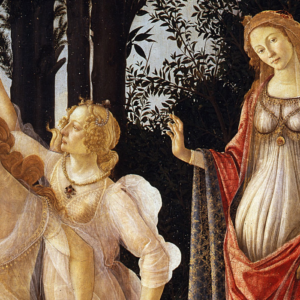 Brigid’s legacy perseveres to this day- both in Celtic and modern pagan communities. As a pagan, I love celebrating Imbolc. It lends an opportunity to refocus before the busyness of spring, reconnect with my development goals, and honor the women who have ushered me to this point in history.
Brigid’s legacy perseveres to this day- both in Celtic and modern pagan communities. As a pagan, I love celebrating Imbolc. It lends an opportunity to refocus before the busyness of spring, reconnect with my development goals, and honor the women who have ushered me to this point in history.
Imbolc imparts lessons that are just as helpful for modern city dwellers as they were for Celtic shepherds in Antiquity.
A shapeshifting goddess of transformation, Brigid invites us to adapt- and to thrive. She encourages us to channel our energies into something creative, mirroring the planet’s fertile energy.
Even if you aren’t pagan, studies show human biology has a strong connection to the changing of seasons. Most cultures honor this in some way- from the practice of Japanese forest bathing to the shift in urban planning promoting health and community wellness through green space and pedestrian-friendly design.
Interested in learning more about Japanese forest bathing? Check out Forest Bathing: How Trees Can Help You Find Health and Happiness, by Dr .Qing Li. It’s a great read, and a perfect gift for the naturalists in your life.
You don’t have to be pagan to incorporate Imbolc-inspired celebrations into your life. Make this your opportunity to refocus on your connection to nature, your feminine energy, your creative desire for change…or simply explore an ancient tradition.
How? Read on!
Let Nature Whisper The Hope Of Spring.
Imbolc is about celebrating the early moments of spring. In the bleak of February, it might feel too cold or too soon to start looking- but our ancestors knew the forest was waking. Take a walk around your neighborhood or venture into the woods to see what life is stirring.
You may notice that the ground is not as hard as it was, that animals are more active. Or hear the early sounds of birds and watch the squirrels dashing after their last winter stores. You may even see a brave sprout peeping above fallen leaves.
Keep an eye out for the crocus.
Towards the end of winter, this purple flower starts to appear in the wild.
An Imbolc walk is a game of natural Hide and Seek. Look for hope and renewal and you will find it! Winter won’t last forever.
Craft Candle Light For Your Home
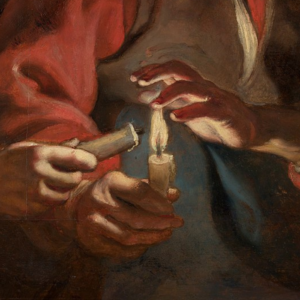 Fire provides warmth, both physical and emotional, in the ongoing winter months. A single flame has the power to change darkness to light.
Fire provides warmth, both physical and emotional, in the ongoing winter months. A single flame has the power to change darkness to light.
Making your own candle at Imbolc is the perfect way to remind yourself to persevere and adapt with the changing seasons.
Have you ever tried crafting traditional dipped candles? This version immediately transports you back in time.
You will need:
- 2 pounds of soy wax
- 12 feet of wicking
- Optional essential oils and/or color squares
- A curtain rod or hanger for drying
- A large double boiler or microwave-safe container, at least 5 inches deep
Instructions:
#1. To begin, cut your wicking into twelve-inch sections.
#2. Set up your hanger or curtain rod for drying the candles. Make sure to lay paper bags, newspaper, or another protective layer down to save your floors or countertops from drips.
#3. Melt your soy wax. For this you can use the stove (with a double boiler) or the microwave.
For microwaved wax, make sure that your container is microwave safe! Heat the wax in 30-second sections until it is fully melted. You may need to reheat the wax during the candle-making process if it starts to solidify.
#4. Add color or scent if desired.
Color squares can add a festive touch to your project. Green is a traditional color for Imbolc, as it evokes spring.
Essential oils can evoke the holiday, too. They’re simple to add. Just mix into the hot wax before starting the forming process
#5. When the wax is ready, take one of your cut wicks and hold it in the center. Allow the ends to droop downward and dip them into the melted wax.
When you first place the wick in the wax, it might float. If so, move the wick gently side to side, and it will sink. If the wicking wrinkles after the first dip, gently tug on the ends to straighten them.
#6. Remove the burgeoning candles from the wax and place them on the drying rack.
#7. Start the process again with another wick. Once it is ready to dry, your first wick should be ready for the next dipping. Repeat this process, alternating between wicks, until the candles build up enough layers of wax. They should measure about ¾ to one inch in diameter.
#8. Once your candles are complete, place them on the drying rack to cool and harden. After they are cooled, cut the wicks to separate the candles, and enjoy!
As you burn your candle, reflect on the changes you want to make in the new season. Make this a moment to reflect on innovative ways to overcome your blocks.
Plant a Seed
I admit, I’m on too many seed supply mailing lists. In the depth of February, I fill my online checkout cart with EdenBrother’s wildflower mixes, think about fruit trees, and start planning my vegetable boxes.
Is there any better way to manifest spring than starting your seeds?
If you’re already an avid gardener, you know when, where, and how to get everything started. Can your garden work double as an opportunity for spiritual growth? Absolutely! As you watch the seed grow, reflect on the planet’s natural cycles and its extraordinary resilience. Talk to the deva, or divine connected energy, of the plant. Whisper your hopes for its growth and offer encouragement.
Make Your Own Butter
Are you more of a kitchen lover than a craft lady or plant mama? Try your hand at making your own butter.
This is a simple way to connect with our ancestors and celebrate the first milking.
You will need:
- 1 pint of heavy cream
- 1 tsp. of salt
- Ice cold water
- A blender or hand mixer
- Cheesecloth
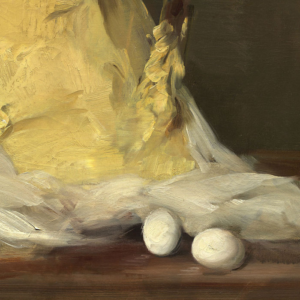 Here’s how you can easily create your own butter at home:
Here’s how you can easily create your own butter at home:
#1. Mix the heavy cream in a blender or with a hand mixer on high until you see it separate into a solid and liquid: butter and buttermilk.
#2. Strain the mixture through the cheesecloth and place the butter in a bowl. Using a spoon, press on the butter to drain any extra liquid. Reserve the buttermilk in the fridge for cooking. (Hint: it’s the secret ingredient for soda bread!)
#3. Transfer the butter to another bowl. Using a fork, work in the salt.
#4. Next, add a cup of ice-cold water to the butter and mix. Pour out the excess water and drain the butter again. This washing process helps the butter last longer. If you’re going to use it all right away- you can skip this step.
#5. Finally, transfer the butter to a clean, flat surface and shape it. Get creative! Make a beautiful silky ball or sculpt into a leaf. Then, wrap the butter in parchment paper and store in the fridge for up to a month. It will also keep in the freezer in a sealed plastic bag for a year.
Celebrating Brigid’s Creativity with Poetry
Poetry is a wonderful way to express yourself and a traditional way to worship Brigid the wordsmith!
When writing at Imbolc, get inspired by nature or reflect on the coming spring. Let yourself be inspired by change. Check out this conversation between myself and Refined By History Lead Editor Meredith Gernigin on writing poetry for your own enjoyment.
Craft a Brigid’s Cross
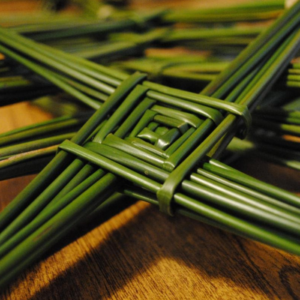 Brigid’s Crosses invoke the goddess’ protection. In Celtic tradition, the crosses are left outside on January 31st to receive the goddess’ blessing and then they are brought inside on Imbolc to display during the spring season.
Brigid’s Crosses invoke the goddess’ protection. In Celtic tradition, the crosses are left outside on January 31st to receive the goddess’ blessing and then they are brought inside on Imbolc to display during the spring season.
Our ancestors made Brigid’s Crosses with hay from the last harvest to underscore natural cycles. I encourage you to forage your own materials from nature on your spring walk. You can soak grasses or long stemmed prairie stalks in water to give them flexibility for weaving.
Are you a city dweller without easy access to natural resources? Here’s how you can make a Brigid’s cross using colored paper.
You will need:
- Colored paper, cut into fourteen, thin strips of equal length (you can use any color, but spring shades like green and pastels are most appropriate)
- String
#1. Hold one piece of paper in one hand. With the other, fold another piece of paper around the middle of the first, facing to the left.
#2. Turn the entire cross 90 degrees to the right. Fold another piece of paper above the center piece, facing left.
#3. Turn the cross another 90 degrees to the right again. Repeat this process until you have used all of your strips of paper. Tie off each end with string.
For help visualizing, check out this video by traditional Irish craftsman Brendan Farren.
Celebrating a Modern Imbolc
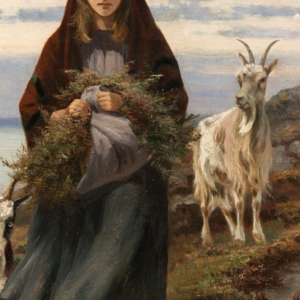 The seasons changing may not be life or death to you, but there is still power in tuning into the planet’s natural cycles.
The seasons changing may not be life or death to you, but there is still power in tuning into the planet’s natural cycles.
Imbolc’s lessons of adaptability, hope, and creativity resonate just as strongly today as they did in ancient times. Celebrating this festival is a beautiful way to connect with the Earth while honoring the resilience of the human spirit.
I hope you take this opportunity to enjoy the first light of spring, and fill your home and heart with the ancient traditions of Brigid.
From my home to yours,
Heather McConnell

